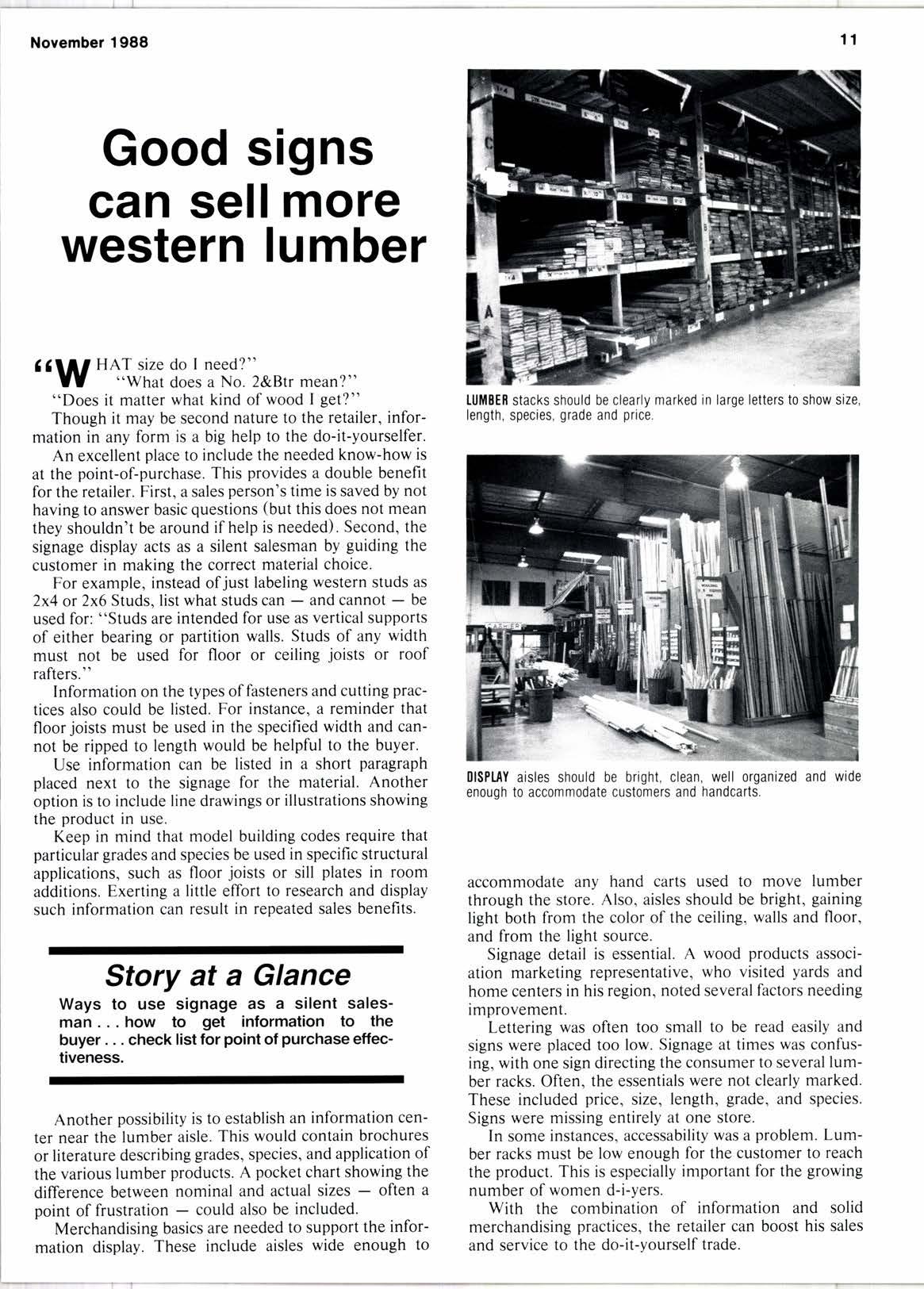
2 minute read
Good signs can sell more western lumber
t' W "tl"l'": i3J :'ftll';&Btr
mean?,,
"Does it matter what kind of wood I get?"
Though it may be second nature to the retailer, information in any form is a big help to the do-it-yourselfer.
An excellent place to include the needed know-how is at the point-of-purchase. This provides a double benefit for the retailer. First, a sales person's time is saved by not having to answer basic questions (but this does not mean they shouldn't be around if help is needed). Second, the signage display acts as a silent salesman by guiding the customer in making the correct material choice.
For example, instead ofjust labeling western studs as 2x4 or 2x6 Studs, list what studs canand cannotbe used for: "Studs are intended for use as vertical supports of either bearing or partition walls. Studs of any width must not be used for floor or ceiling joists or roof rafters. "
Information on the types of fasteners and cutting practices also could be listed. For instance, a reminder that floor joists must be used in the specified width and cannot be ripped to length would be helpful to the buyer.
Use information can be listed in a short paragraph placed next to the signage for the material. Another option is to include line drawings or illustrations showing the product in use.
Keep in mind that model building codes require that particular grades and species be used in specific structural applications, such as floor joists or sill plates in room additions. Exerting a little effort to research and display such information can result in repeated sales benefits.
Story at a Glance
Ways to use signage as a silent salesman. how to get information to the buyer check list for point of purchase effectiveness.
Another possibility is to establish an information center near the lumber aisle. This would contain brochures or literature describing grades, species, and application of the various lumber products. A pocket chart showing the difference between nominal and actual sizes - often a point of frustrationcould also be included.
Merchandising basics are needed to support the information display. These include aisles wide enough to accommodate any hand carts used to move lumber through the store. Also, aisles should be bright, gaining light both from the color of the ceiling, walls and floor, and from the light source.
Signage detail is essential. A wood products association marketing representative, who visited yards and home centers in his region, noted several factors needing improvement.
Lettering was often too small to be read easily and signs were placed too low. Signage at times was confusing, with one sign directing the consumer to several lumber racks. Often, the essentials were not clearly marked. These included price, size, length. grade, and species. Signs were missing entirely at one store.
In some instances, accessability was a problem. Lumber racks must be low enough for the customer to reach the product. This is especially important for the growing number of women d-i-yers.
With the combination of information and solid merchandising practices, the retailer can boost his sales and service to the do-it-vourself trade.
S0Ll0 paneling can be laid up in a variety of patterns. Interlocking tongue and groove edges will produce a seamless, contemporary look while overlapping edges will have a more oronounced visual effect.










